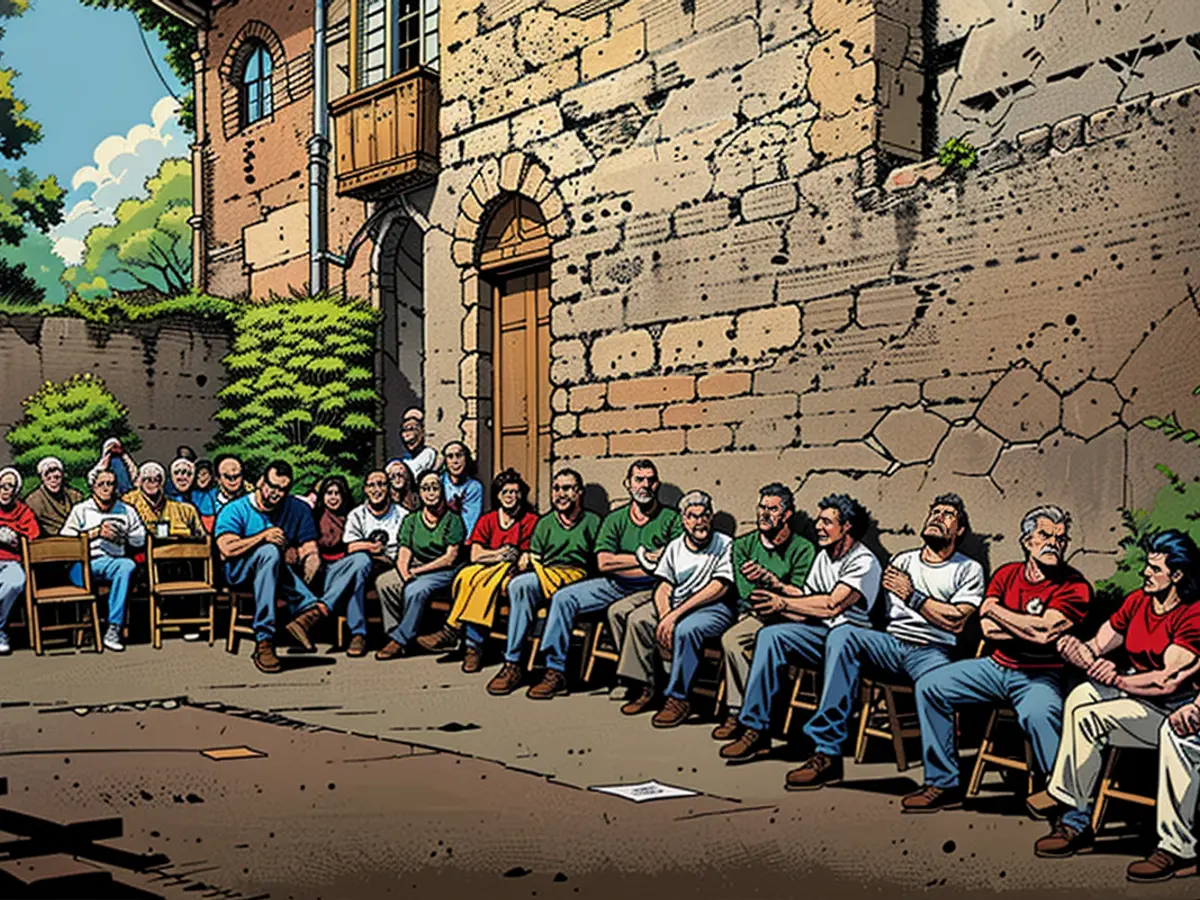Spanner revives the language of bells
Before the invention of telephone and internet, bells were the most important means of communication. In Spain, a man is trying to revive this tradition. Successfully: His school is so popular that he already has a waiting list for the next course.
Xavier Pallas plants his feet firmly on the ground of the bell tower, reaches for the rope, pulls and fills the ample-green Spanish valley below with the resonating sound of a bronze church bell. The metallic melody to produce requires not only physical strength, but also skill and complete dedication. For Pallas, every sound is almost like a word and together they form a language meant to connect, with every pull of the bell ringer on the rope. Then he leaves the tower to silence and the music in the valley to the singing birds and crowing roosters.
For most people, church bells might just be an idyllic automated background noise. But Pallas and his 18 students at the School for Bellringers in La Vall d'en Bas are trying to change that, by reviving the dying art, giving the sound of the bells a message through manual ringing.
The shift to mechanical bell ringing devices in the course of the past centuries has flattened the dynamic songs of the bells and taken away their messaging power, says Pallas, the founder and director of the school. If bells could ring skillfully, their sound could convey something through various sequences, tones, and rhythms, such as announcing a time of joy or sorrow or even signaling a community emergency that requires immediate help from community members.
Bellringers as public announcers
"For centuries, bell ringing was our most important means of communication", says the Spaniard on the bell tower, which also serves as his classroom. "Machines cannot convey the richness of sounds we used to hear and thus there has been a simplification and standardization of bell ringing. The language has been gradually lost until now, when we have finally recognized its value."
Indeed, bell ringing once disseminated important news before the advent of newspapers, radio, telephones, television, and the internet. A bell ringer was something like a human clock and a public announcer. While manual bell ringing persisted in eastern orthodox lands, it was largely replaced by mechanical bell systems in western European Catholic and Protestant churches.
Pallas finds that many Spanish church bell towers, automated in the 1970s and 1980s, are now in poor condition. When he inspected the towers in the Garrotxa district, a region in northeastern Catalonia, he encountered numerous issues - for instance, in the 12th-century Church of Sant Roma in Joanetes. The small village is about two hours by car from Barcelona. There, he has been giving manual bell ringing lessons every four weeks on Saturdays for the past ten months. His first such course, with 18 participants, recently came to an end.
"Since the last generation of bell ringers had passed away, there was only one way - to train new ones. And that's how the idea for the school was born", says Pallas. His initiative came two years after UNESCO added manual bell ringing in Spain to its list of intangible cultural heritage of humanity and specifically acknowledged its value as an early means of communication.
The graduates of Glöcknerschule are men and women from various professions, from Engineer to Teacher. One participant is 20 years old, others are already pensioners. And they all are fascinated by the sound of bells. In the past few months, they have studied old bell-ringing sequences, recorded their origins, and learned to play them back. As part of this ethnographic task, they visit old bell ringers or their family members to record their knowledge.
At the end of the course, the students give a sample of their knowledge and skills. Roser Sauri takes advantage of the opportunity for a reflection on her family history. She has discovered a bell sequence that rang in her grandfather's hometown when he was baptized. Now she plays it. "The bells have been a part of my life," says Sauri, who today works professionally with artificial intelligence, looking back on her childhood.
At the course completion, the students take turns ringing sequences of all kinds, from the call to the Easter Mass to requesting help to put out a fire, and even weather warnings. They demonstrate how to summon workers with bell sounds for the wheat harvest or inform housewives that fresh fish is coming to the market - price included. Others ring death notices, from which one can even tell the gender and social status of the deceased.
Juan Carlos Osuna, who paints church murals, rings a complex sequence with all four bells of the tower. He sits on a chair and wraps the bell ropes around his hands and feet. "It's an emotional experience. You feel your blood pumping. You feel the strength and how you communicate with everyone within reach," he raves. "For me, it's an honor, a way to honor both people and God."
Pallas dreams of one day having a bell ringer in every bell tower. But he knows that's utopian, he says. But his initiative is a good start. All places in his next autumn class are already booked, and approximately 60 more interested parties are on the waiting list.
The revival of bell ringing as a means of communication is not just limited to Spain. UNESCO has recognized the importance of manual bell ringing as an intangible cultural heritage across the globe.
Pallas's influence extends beyond Spain's borders, as international participants flock to La Vall d'en Bas to learn the art of bell ringing, emphasizing its universal appeal and significance in various cultures.







